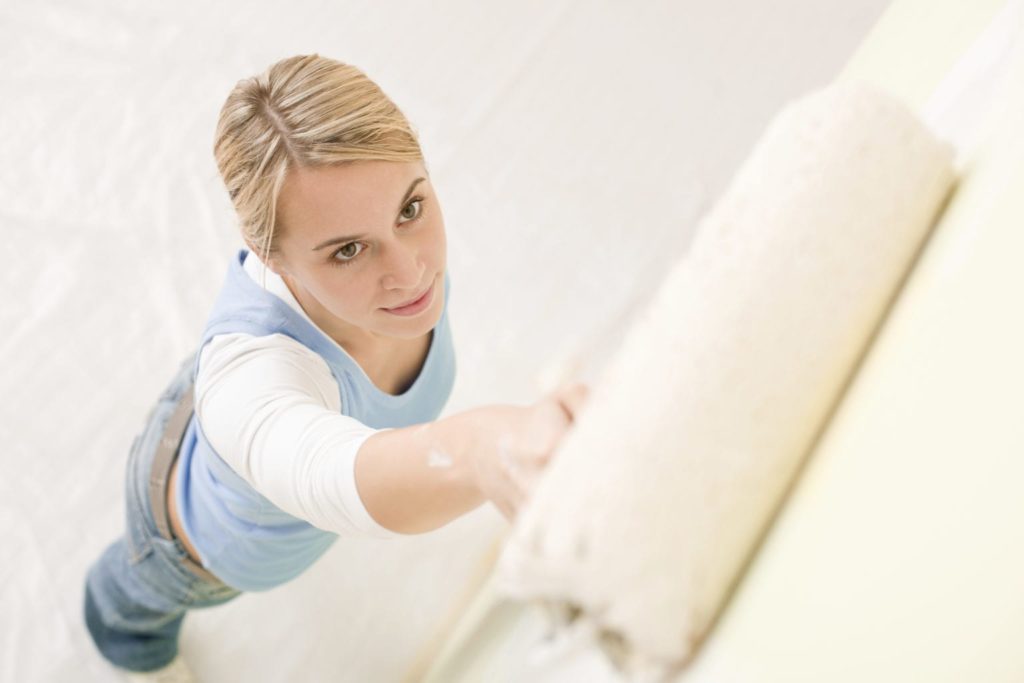by Clifford K. Schoff, Schoff Associates
Architectural coatings suffer many of the same defects on application as other coatings. Common problems involve too much flow (sagging on vertical surfaces, formation of other surface defects) and too little flow (brush marks, orange peel, poor air release). Different appearance in brushed and roller applied areas also is related to flow. The flow demands on architectural coatings are considerable: low viscosity on application is required to adequately transfer the paint from the brush, roller, or spray gun to the surface being painted; only a small viscosity increase is allowed immediately after application if flow and leveling are to occur; and then viscosity must increase with moderate rapidity to prevent sagging and defect formation.
What is needed is a classic structured fluid with shear thinning and thixotropic behavior: a structure that is broken up by the shearing action of application (less so with rollers) and begins to recover after application (but not too quickly), eventually reaching the initial viscosity or close to it. Achieving the right amount of initial structure and controlling the rate at which it reforms depend on the skill of the formulator, although rheologists have contributed to success at some larger paint producers. A number of different flow modifiers have been used to produce the needed properties. A combination of additives almost always works better than a single one.
The period of time after application when a coating surface is sufficiently wet to allow flow, release of solvents and air, and touching up without leaving marks is called open time. With solventborne architectural paints, the length of time usually is sufficient to prevent problems. However, this is not always true of latex paints, where control of open time has been the focus of much research and product development, especially with the move to low- and zero-VOC products. Latex paints dry quickly and the open time is short. There often is not enough time to brush out defects, smooth the surface, or apply additional paint without leaving brush marks or affecting the gloss. In addition, there is the problem of rapid drying of the edge of the applied paint. Without some help in the form of solvents and additives, many latex-painted walls would have stripes—distinct boundaries where wet and dry layers had overlapped producing lines of color density or gloss difference. This defect is called lapping. Lapping is prevented by keeping the edge of the applied paint wet long enough to allow the next strip of paint that is applied to meld in to it. Not surprisingly, this is called wet edge and wet edge time (also called lapping time) is the time period during which no edge marks or boundaries are produced when fresh paint is applied over a previously painted area.
Historically, control of open time and wet edge has been done through the incorporation of slow evaporating humectants such as ethylene and propylene glycol. However, these materials are classified as VOCs and their presence at the level needed for adequate open and wet edge times raises the VOC of latex paints beyond limits set by regulations. This has led to a considerable amount of research to find additives and/or resin modifications that will extend open and wet edge times. The many products now on the market vary considerably in their chemistry and technology, ranging from latexes and dispersions to combinations of latexes and modifiers, to other combinations that depend on extender–latex reactions or other interactions, silicones, and even fluorosurfactants.
Another defect may occur when a brush is used for cutting in corners. The high shear brush may produce an appearance different from those areas which have been applied with a low shear roller. Formulators usually solve this problem by trial and error, but what they are doing is changing the rheology, possibly the viscosity–shear rate profile, viscosity recovery after shearing, the leveling ability of the paint, or all of these.
Exterior latex paints applied at low temperatures may have poor appearance with rough surfaces, possibly even powdery surfaces due to poor film formation. Professional painters probably have sense enough not to apply latex paints on cold days, but DIY painters like me often put off their painting projects until November and must paint even on cold days. Slow coalescing solvents can lower the temperature at which film formation will occur, but too much solvent or one that is too slow can lead to tacky coatings and blocking problems.
In addition, the current desires for low or no VOC may mean that little or no coalescing solvent can be included. One solution is to use one of the new latexes with a hard core and a soft shell where the continuous phase is composed of the shell polymer in which the hard cores form ordered structures. There is no need for a coalescing solvent. Coatings chemists always seem to come up with ways to solve or get around problems.
